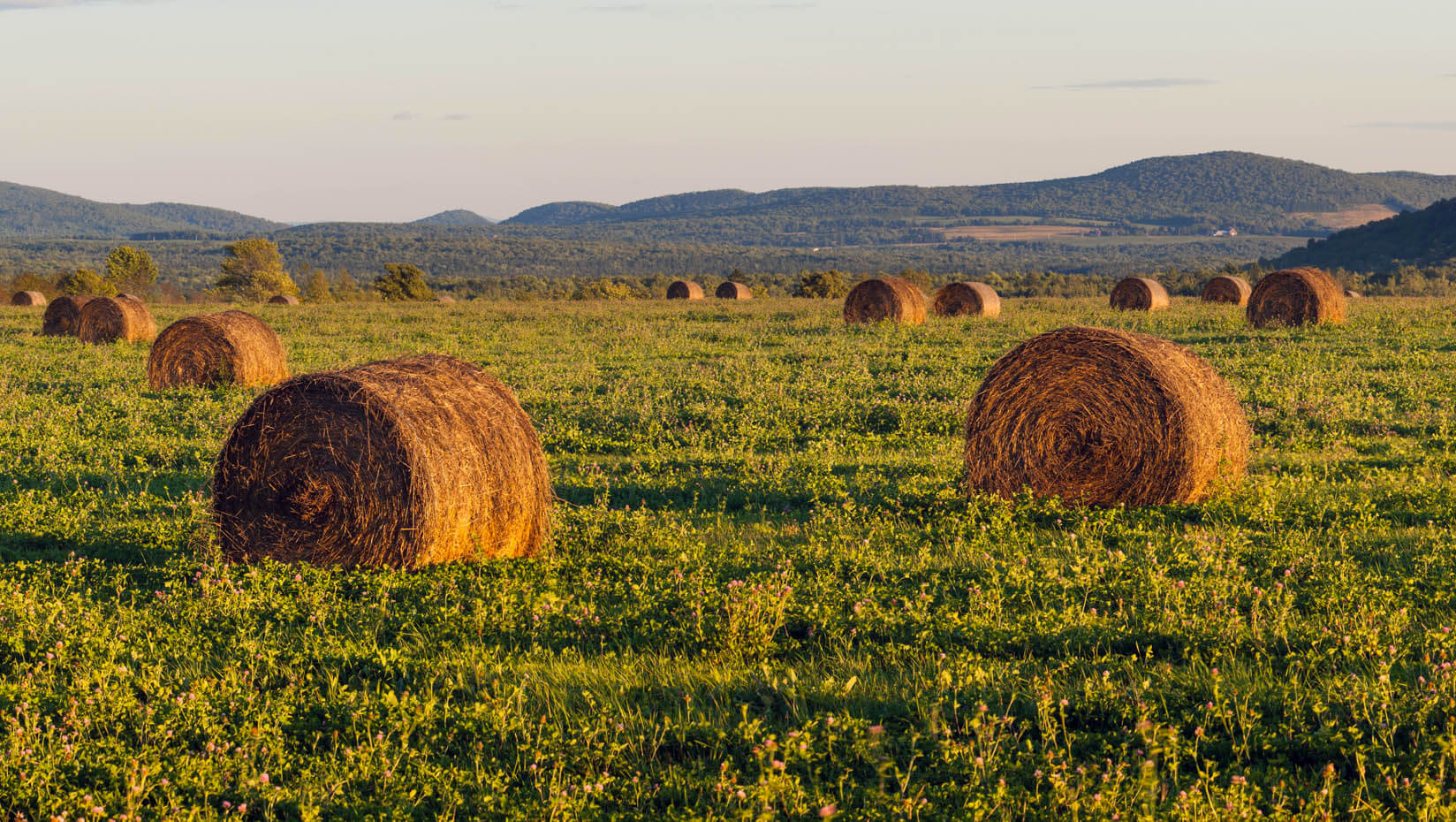
UMaine study shows alfalfa and other legumes may be less responsive to preservatives than grass hay
Properly storing hay is a logistical challenge for farmers. Hay that is baled and stored too moist — at moisture levels above 15–20% — can lead to the growth of molds that reduce bale weight and nutritive value, and impact animal health. Improper hay storage can even cause so much microbial activity that the bales will heat up and combust.
New research shows that certain preservatives are more helpful than others to keep high-moisture hay mold-free — and that grass hays are more responsive to these treatments, compared to alfalfa.
A study conducted by the University of Maine and Virginia Tech looked at the effects of various chemical and microbial additives on hay preservation during storage. Hay preservatives such as propionic acid, buffered organic acids, other organic acids, urea, anhydrous ammonia and microbial inoculants are commonly applied to high moisture hay to reduce microbial growth.
“The hay industry is the third most important crop commodity in the U.S. and Maine in terms of value of production. Last year’s harvest was estimated to be worth $19 billion and $36 million, respectively. In areas with frequent rainfalls during the growing season, like New England, it is quite difficult to produce properly wilted hay. That is one of the reasons we have among the highest hay prices in the U.S.,” says Juan Romero, UMaine associate professor of animal nutrition and corresponding author of the study.
The researchers compiled and analyzed the results of 62 published articles on hay preservatives to determine the effects of preservative type, application rate, forage type, bale moisture and their interaction on dry matter losses, moldiness, bale heating, nutritional composition and dry matter digestibility, among other response variables.
The results showed that organic acid-based preservatives like propionic acid, buffered organic acids and other organic acids were effective at reducing dry matter loss (also known as “bale shrink”), moldiness, bale heating and indigestible protein. They were also, to different extents, effective at preserving hay sugars and dry matter digestibility.
Meanwhile, microbial inoculants had only small effects on the prevention of hay spoilage, and were negatively affected by the increase of hay moisture.
“The lack of responses for hay microbial inoculants evaluated so far is concerning since this is one of the few options organic hay producers have to deal with situations where bales have to be baled wet due to unexpected weather. Future research may generate novel inoculants and other preservatives that can be used in organic agriculture. Baleages are an excellent option for meeting internal forage needs, but they are quite difficult to move around since they need to be kept sealed, so they cannot match the marketability of hay,” says Romero.
Perhaps most significantly, the researchers found that legume hay, including alfalfa, was less responsive to the effects of preservatives than grass hay during storage. Legume hay typically has a higher nutritive value than grasses due to their higher protein and pectin concentrations and higher rate of fiber digestion. Alfalfa alone represents half of the hay production in the United States.
The current guidelines for preservative application are the same for both alfalfa and grasses, but this will likely change thanks to the study’s findings.
“Legume hay is not only more susceptible to spoilage than grasses, but also less responsive to current preservatives due to their high levels of protein and pectin, which are precisely the components that increase their nutritive value. You could say it is the price to pay for having better hay quality; unfortunately, molds prefer these high-quality nutrients, too. We speculate that the high buffering capacity of protein and pectin reduces the antifungal activity of organic acid-based preservatives,” Romero says.
Romero says more studies are planned to determine a new set of recommendations for high-moisture legume, grass and mixed hay preservative application.
“We expect a higher application rate as the legume component increases in the bale. Legumes are essential in herbivore nutrition, we just have to improve our ability to better preserve their higher quality,” says Romero.
The study was published March 1, 2022, in the Journal of Animal Science. Romero said that the research would not have been possible without first-author Marjorie Killerby and Diana Reyes, both graduates of the UMaine animal and veterinary sciences graduate program, as well as Robin White, associate professor at Virginia Tech.
“Much like Maine, hay production is one of the top 10 agricultural commodities within Virginia, and as the climate changes and weather becomes more variable, hay producers require more flexible strategies to ensure the value of their harvest. The results of this study highlight some of the tools which may be effective in maintaining hay quality in the face of climate uncertainty and illustrate where we need more data exploring the efficacy of these approaches. Particularly with the microbial dataset, our analysis opportunities were limited due to a small data set. More research on these products may help to better illustrate under what conditions microbial inoculants are effective,” White says.
The study was partially funded by National Institute of Agriculture, Hatch U.S. Department of Agriculture funds from the Maine Agricultural and Forest Experiment Station and Badische Anilin und Soda Fabrik (BASF).
Contact: Sam Schipani, samantha.schipani@maine.edu
